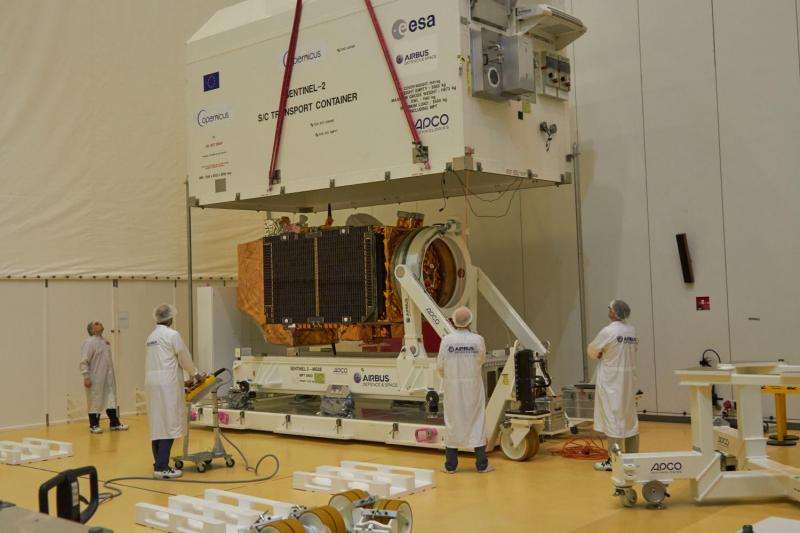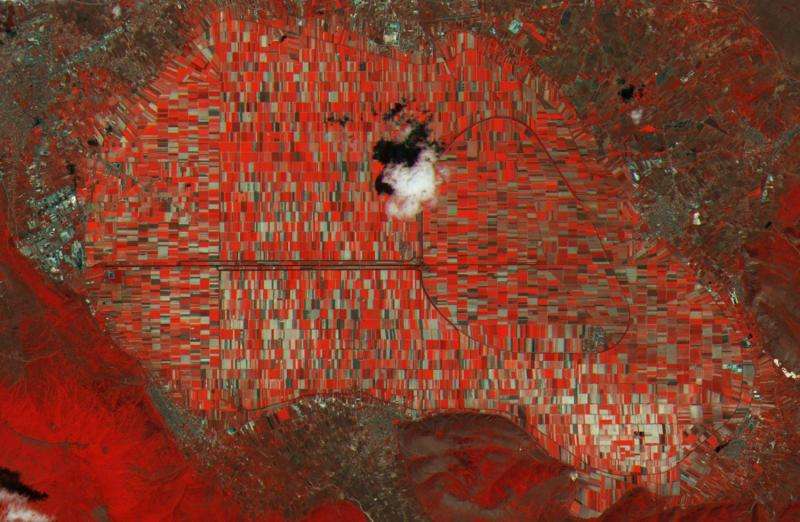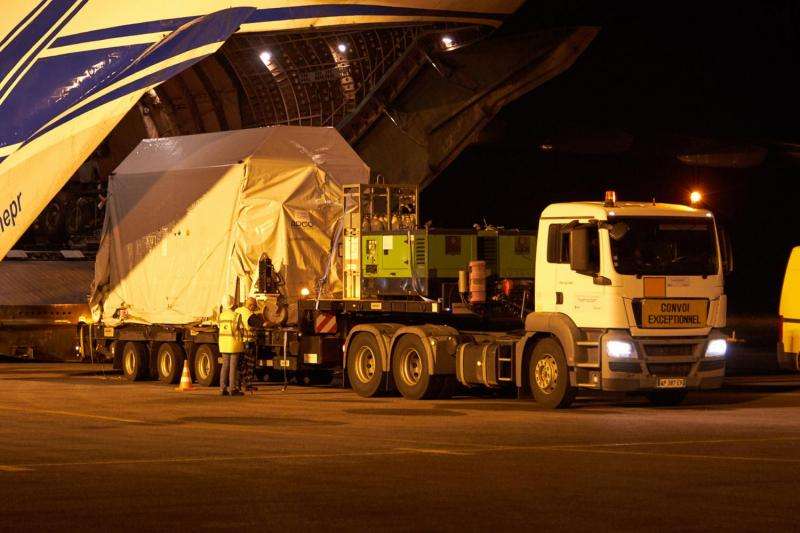The second Sentinel-2 satellite, Sentinel-2B, arrived at Europe’s spaceport in Kourou, French Guiana on 6 January 2017 to be prepared for launch. After being moved to the cleanroom and left for a couple of days to acclimatise, cranes were used to open the container and unveil the satellite. Over the next seven weeks the satellite will be tested and prepared for liftoff on a Vega rocket. Credit: ESA
Some of us may be easing ourselves gently into the New Year, but for the team readying Sentinel-2B for liftoff on 7 March it's full steam ahead.
On 5 January, the satellite was shipped from ESA's site in the Netherlands – where it had been undergoing testing since June – and arrived safe and sound in French Guiana the following day.
The Sentinel-2 mission is designed as two satellites working in tandem – Sentinel-2A has been in orbit since June 2015.
Offering 'colour vision' for Europe's Copernicus programme, the mission combines high-resolution and novel multispectral capabilities.
Josef Aschbacher, ESA's Director for Earth Observation Programmes, said, "Since both satellites have a 290 km-wide coverage path and they orbit 180° apart, the time it takes to image the globe will be cut in half to five days once Sentinel-2B is operational."
The mission mainly provides information for agriculture and forestry and for helping to manage food security. Satellite images are used to determine key information about plants, such as chlorophyll and water content.
This is particularly important for predicting yields effectively and applications related to Earth's vegetation.
This Sentinel-2A false colour image shows agricultural structures in the Abruzzo region of central Italy. The varying shades of red and other colours across the entire image indicate how sensitive the satellite’s multispectral camera is to differences in vegetation cover and chlorophyll content. This is used to provide key information on plant health. For this image, the brighter reds indicate more photosynthetically active vegetation, as seen in many of the fields and along the Roveto Valley Abruzzi mountain range in the lower left. Credit: Copernicus Sentinel data (2015)/ESA
As well as monitoring plant growth, the mission maps change in land cover and monitors the world's forests. It also provides information on pollution in lakes and coastal waters.
Now in the cleanroom at Europe's spaceport, Sentinel-2B is already on its stand for the start of a seven-week campaign to test and prepare it to be lofted into orbit on a Vega rocket.
ESA's launch campaign manager, Paolo Laberinti, said, "It's good to see that our delicate cargo arrived safe and well.
"We've already been able to set up all the technical equipment that we use to test the satellite and connect it to its electrical equipment – so that it's ready for testing.
"We are off to a flying start and eager to get our baby into orbit so that it can join its twin and do the job of continuously delivering images to monitor our changing world."
On 5 January 2017, the Sentinel-2B satellite was shipped from ESA’s site in the Netherlands – where it had been undergoing testing since June – and arrived safe and sound in French Guiana the following day. Over the next seven weeks the satellite will be tested and prepared for liftoff on a Vega rocket. Credit: ESA
Concurrently, the Sentinel-2 mission control team at ESA's operations centre in Germany has already begun intensive simulation training for the critical launch and early orbit phase.
Sentinel-2B is scheduled for liftoff on 7 March at 01:49 GMT (02:49 CET; 22:49 local time on 6 March).
Provided by European Space Agency
























